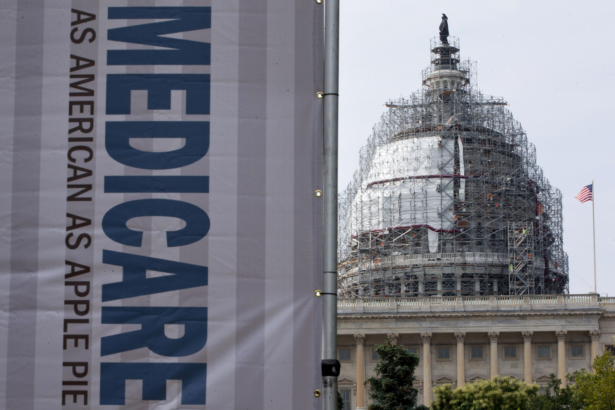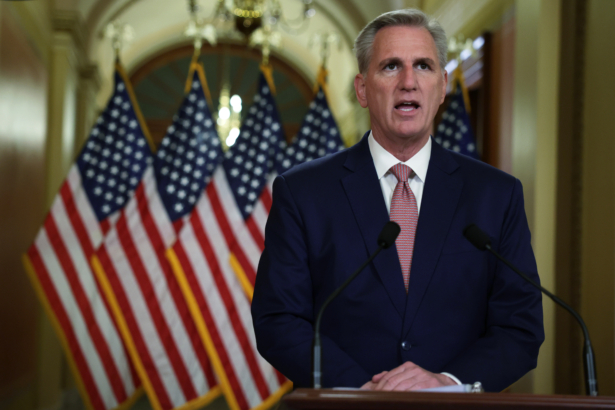The Medicare Trust Fund will last 25 years longer with lower costs to beneficiaries if President Joe Biden’s proposed budget is adopted, the White House announced on March 7.
The statement came two days before the scheduled release of Biden’s full budget proposal and amidst a partisan debate over raising the nation’s debt ceiling, during which both sides have pledged to protect and strengthen Medicare, the popular health care program for retirees.
The Trust Fund will be exhausted by 2028 according to a 2022 report by the Medicare Trustees. Biden’s plan would extend the life of the fund into the 2050s, according to an estimate by the Medicare Office of the Chief Actuary.
Biden’s plan begins with increasing Medicare taxes for high-wage earners.

The Biden budget would increase the Medicare tax rate from 3.8 to 5 percent on those earning more than $400,000 a year and would close loopholes that currently allow some wealthy people to exclude part of their income from the Medicare tax.
“Since Medicare was passed, income and wealth inequality in the United States have increased dramatically. By asking those with the highest incomes to contribute modestly more, we can keep the Medicare program strong for decades to come,” the White House report stated.
The budget would also direct two other revenue streams into the Trust Fund, the Medicare Net Investment Income Tax (NIIT) and savings realized from the renegotiation of prescription drugs under the Inflation Reduction Act.
The NIIT was created in 2013 under the Affordable Care Acts and labeled as a Medicare tax. But the law itself did not specify the use of the funds, so money received from that tax has so far been deposited in the general fund, not the Medicare Trust Fund.
Negotiated savings on prescription drugs will provide an additional $200 billion to the Trust Fund over 10 years, the White House stated.
At the same time, Biden proposes to lower costs to Medicare beneficiaries through lower drug prices, limiting copays on certain drugs to $2, waiving copays for three mental or behavioral health visits per year, and extending mental health coverage to include services such as peer support and certified addiction counseling.
Welcome News
The announcement was welcome news for budget watchdogs.
“We strongly support the administration’s efforts to strengthen the Medicare trust fund,” said Maya MacGuineas, president of the nonpartisan Committee for a Responsible Federal Budget.
Yet her praise was not unqualified.
“It would be better for the plan to keep the drug savings in Medicare Part D, where costs remain too high and are rising too quickly,” MacGuineas said.

“Far more concerning, the administration’s plan to redirect the NIIT revenue amounts to a large general revenue transfer that would strengthen Medicare on paper without truly improving its financing.
“Absent offsetting measures, this part of their plan simply robs Peter to pay Paul and, in the process, would worsen the budget outlook outside of the trust fund.”
Matthew Fiedler, senior economic fellow for health policy at Brookings, also saw the Biden plan as a positive development.
“The revenue proposals would raise a meaningful amount of revenue, primarily from higher income households. And the drug proposals that the administration seems to be envisioning will meaningfully reduce what the federal government spends on prescription drugs,” Fiedler said.
“Those things taken together have substantial scope to extend the length of the trust fund and reduce the federal deficit more broadly.”
The sticking point could be the source of the revenue, which comes in part through increased taxation of high earners.
“Revenues need to be part of any long-term strategy here,” Fiedler said. “And the specific proposals put on the table here are sensitively designed. There are obviously people who will disagree about where new revenues should come from.”
Partisan Posturing
The White House announcement strikes the latest pose in a posturing battle between Republicans and Democrats over who loves Medicare the most.
When House Speaker Kevin McCarthy (R-Calif.) refused to raise the debt ceiling in January until the president agreed to future spending cuts, Biden accused the Republicans of trying to cut Medicare and Social Security, which account for 31 percent of the nation’s budget.
Biden renewed the charge in his State of the Union address on Feb. 7, saying, “Some Republicans want Medicare and Social Security to sunset,” referring to a plan authored by Sen. Rick Scott (R-Fla.)—a claim was quickly dismissed by Senate Minority Leader Mitch McConnell (R-Ky.)—and also a Republican Study Committee report released last year that suggested alterations to Social Security and Medicare.

Two days later, 13 House Republicans introduced a non-binding resolution declaring that Medicare is a “vital pillar” of senior health care and committing to the United States to “save and strengthen Medicare and no longer use Medicare as a slush fund to finance Democrats’ partisan policy agenda.”
McCarthy and other prominent Republicans have said they envision no changes to Medicare or Social Security, but want to return federal spending to 2022 levels. However, McCarthy has been vague about which spending should be reduced or eliminated.
The president has consistently said he will not negotiate over increasing the debt ceiling because failure to do so would put the full faith and credit of the United States at risk. However, Biden has said he would work together with Republicans to reduce the federal deficit.
Sen. Joe Manchin (D-W.Va.) broke with the Democrat party line by calling for future spending cuts along with an increase to the nation’s debt ceiling in a March 3 speech.
The debt ceiling is currently $31.4 trillion, which would have been reached on Jan. 19 if the U.S. Treasury hadn’t taken “extraordinary measures” to delay it.
Those measures will be exhausted sometime between July and September according to the Congressional Budget Office.
From The Epoch Times

